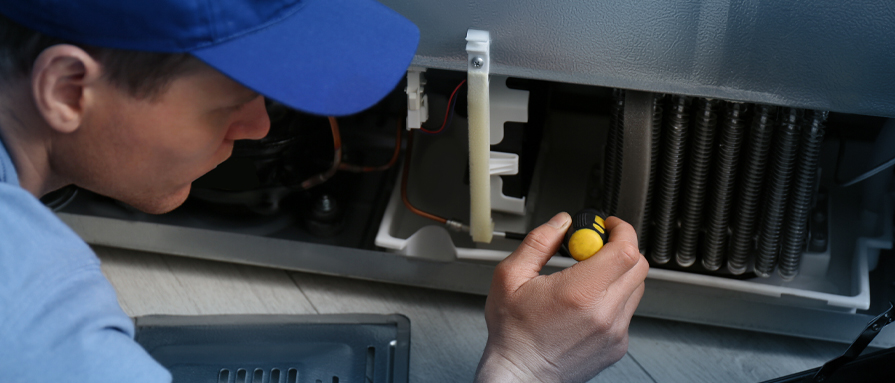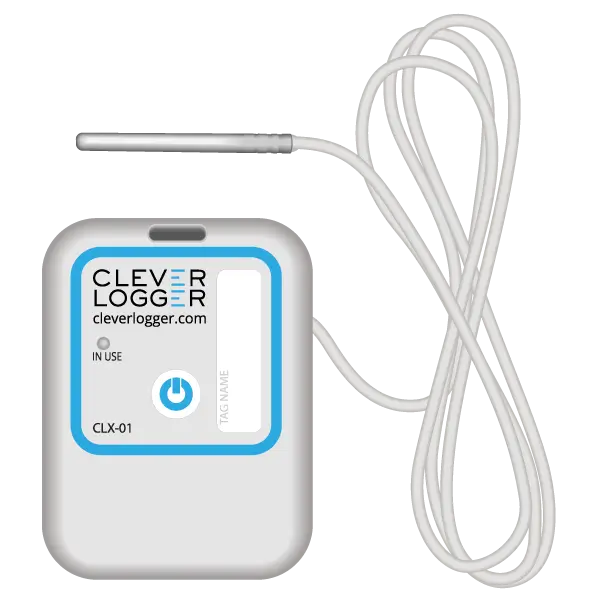I think I’m going to ruffle a couple of feathers with this post so I’m going to begin by saying that there are some really good service techs on the road. However, there are some fridge technicians who are doing the bare minimum, focusing on getting in and out as quickly as possible, and this is causing confusion and concealing poorly performing vaccine fridges.
Occasionally, we are contacted by GPs and pharmacies to explain why the temperature loggers don’t agree with their fridge’s temperature. There are good reasons why this happens and you usually shouldn’t be too concerned. However, issues like your fridge not performing its job effectively should raise concerns.


Too often, the caller will also say that the fridge has just been serviced and the technician has verified the temperature as correct. I want to dive into this a bit deeper. How is it possible for a temperature logger to be saying one thing and the fridge to be saying something totally different? How can a technician sign off on a fridge when the logger is showing a significant problem?
I will be demonstrating two very different approaches by the service tech to highlight the possible difference in the quality of service.
Case 1
Great Service
There was a vaccine fridge in a remote town. Getting a technician there in the first place was going to be expensive, but Clever Logger was showing a significant variation from the fridge temperature and was showing temperatures way below 2°.
A technician came out, checked the fridge, and signed off on it. All was fine. A week later, we were having a similar conversation with the owner because Clever Logger was now showing it being below 0°, now a major discrepancy. At this point it wasn’t just one logger either; a second Clever Logger and a Logtag were sent to the customer to help them figure out what was going on. All the loggers were consistently reporting the same data.
Fortunately, the technician that serviced the fridge had tested the temperature with a logger, not a thermometer so they were able to provide the customer with comprehensive log data, including the date, time, and temperature readings for the tests. This allowed us to confirm the accuracy of the data by comparing it with our own loggers.
Moreover, the technician collected enough data to monitor two complete cycles of the fridge, which required being on-site for an hour. We were able to match the high and low-temperature points.

In this case, it turned out that the fridge had a significant issue and had to be replaced. We were able to use the service data alongside our own data to confirm the reliability of the information.
Key point: A competent service technician will monitor the fridge for at least 1 cycle to confirm not only that the display matches the thermometer, but also that it captures the highest and lowest temperatures accurately.
Case 2
Useless Service
We encountered a similar situation with two loggers that were in agreement with each other but disagreed with the vaccine temperature display. Additionally, the fridge had been serviced less than 2 weeks ago. This time, however, the test result from the last service only showed two things:
And surprise, surprise, they both say 5°. The technician’s “test” concluded that the fridge was working correctly because the thermometer agreed with the display.
Here are some reasons why this is minimal at best
and dodgy at worst:
1. The fridge’s temperature is continually heating up and cooling down and it’s the hottest and coldest moments that you really care about most. A one-off reading may not capture these spikes and could fail to identify if your fridge is getting too cold or too hot.
2. In many cases, the technician will monitor the temperature at the same location as the fridge sensor. While this is great for demonstrating that the sensor is “accurate”, it does not reflect what is going on inside the fridge. Our loggers are monitoring the interior of the fridge and telling you that there is a problem inside.
3. The temperature throughout a fridge will vary greatly, even with fan-forced air. Technicians may move the thermometer to an area that best matches the display.
4. Waiting for the thermometer to match the display and recording those numbers is a possible shortcut that won’t guarantee the accuracy of the fridge’s performance.
5. Consider an extreme example: If you put a thermometer in a freezer, at some stage as it cools it will show 5°. However, it’s only when it consistently displays 5°C that you can trust it. A one-time reading may not provide a complete picture.

To do it properly, the report should show you:
1. The warmest part of the cycle for both the display and the thermometer/logger
2. The coolest part of the cycle for both the display and the thermometer/logger
3. The location of the thermometer/logger for the test. It needs to be inside the fridge where stock is kept.
4. The times the tests were done (so you can compare them with your own loggers)
At this point I was asked what the next step should be. It was clear the fridge is running too cold and needs adjustment. The technician should be contacted again, or it might be worth considering finding a more capable technician for the job.

What can we do to help?
It not my intention to be playing the blame game in this article. It’s really about trying to help you trust both your fridge and logger. When there is a disagreement between the fridge and logger then we need to ensure that you are comfortable with the variance (like I said, there are legitimate reasons for slight differences), or get to the bottom of what is going on.
In this example (and many other cases similar to this) we have sent additional loggers to help confirm that the results of one logger as consistent. Our goal is to rule out the possibility of a faulty logger and to establish trust in the results. This approach then allows the conversation to move forward into “why are we getting these results”.
However, this then leads to potential conflict with the fridge supplier/technician. We are happy to be a part of the conversation to help dive into what is happening and most suppliers are also keen to fix problems. We have personal relationships with many of the companies and technicians, working together to keep you happy.
Solutions can range from simple adjustments to more costly ones (like buying a new fridge). We understand cost is a concern, but our primary objective is to provide you with a fridge that you can wholeheartedly trust for vaccine storage.
So, what can we do to help you fully trust your vaccine fridge?
Clever Logger is sold to government departments, public and private hospitals, and other large corporations. We understand that it’s often not possible to purchase with a credit card on a web site.
Call us on 1300 80 88 89 or send an email to [email protected] and we’ll send you a written quote. We are happy to send out most orders on receipt of a verified purchase order.


All prices are in Australian dollars and include GST

KEEP BATTERIES OUT OF REACH OF CHILDREN
Clever Logger loggers are intended for commercial use only. They contain small batteries. Swallowing can lead to chemical burns, perforation of soft tissue, and death. Severe burns can occur within 2 hours of ingestion. Seek medical attention immediately.
To prove it, we’ll send you a Starter Kit to try out for a whole month.
Set it up, have a play, explore the features – obligation free.
If you love it, just let us know.
If not, just send it back.

| QUICK SPECS | |
|---|---|
| Model | CLD-01 |
| Type | Temperature only with Dual Sensors |
| Temperature Range | Internal sensor: -23°C to +60°C External sensor: -40°C to +80°C |
| Humidity Range | N/A |
| Battery Type | CR2450 |
| Battery Life | Replace every 12 months |
| Accuracy |
Internal Sensor: ±0.3℃ (0℃ to +60℃) ±0.3℃ to ±0.7℃ (other temperatures) External Probe: ±0.5℃ (-20℃ to +40℃) ±1℃ (other temperatures) |
| Offline Memory | approx 24 days logging at 5 minute intervals |

| QUICK SPECS | |
|---|---|
| Model | CLX-01 |
| Type | Temperature only with Probe |
| Temperature Range | -40°C to 60°C Can operate up to 80°C for short periods |
| Humidity Range | N/A |
| Battery Type | CR2450 |
| Battery Life | Replace every 12 months |
| Accuracy | ±0.5℃ (-20℃ to +40℃) ±1℃ (other temperatures) |
| Offline Memory | approx 24 days logging at 5 minute intervals |